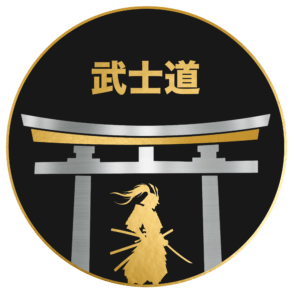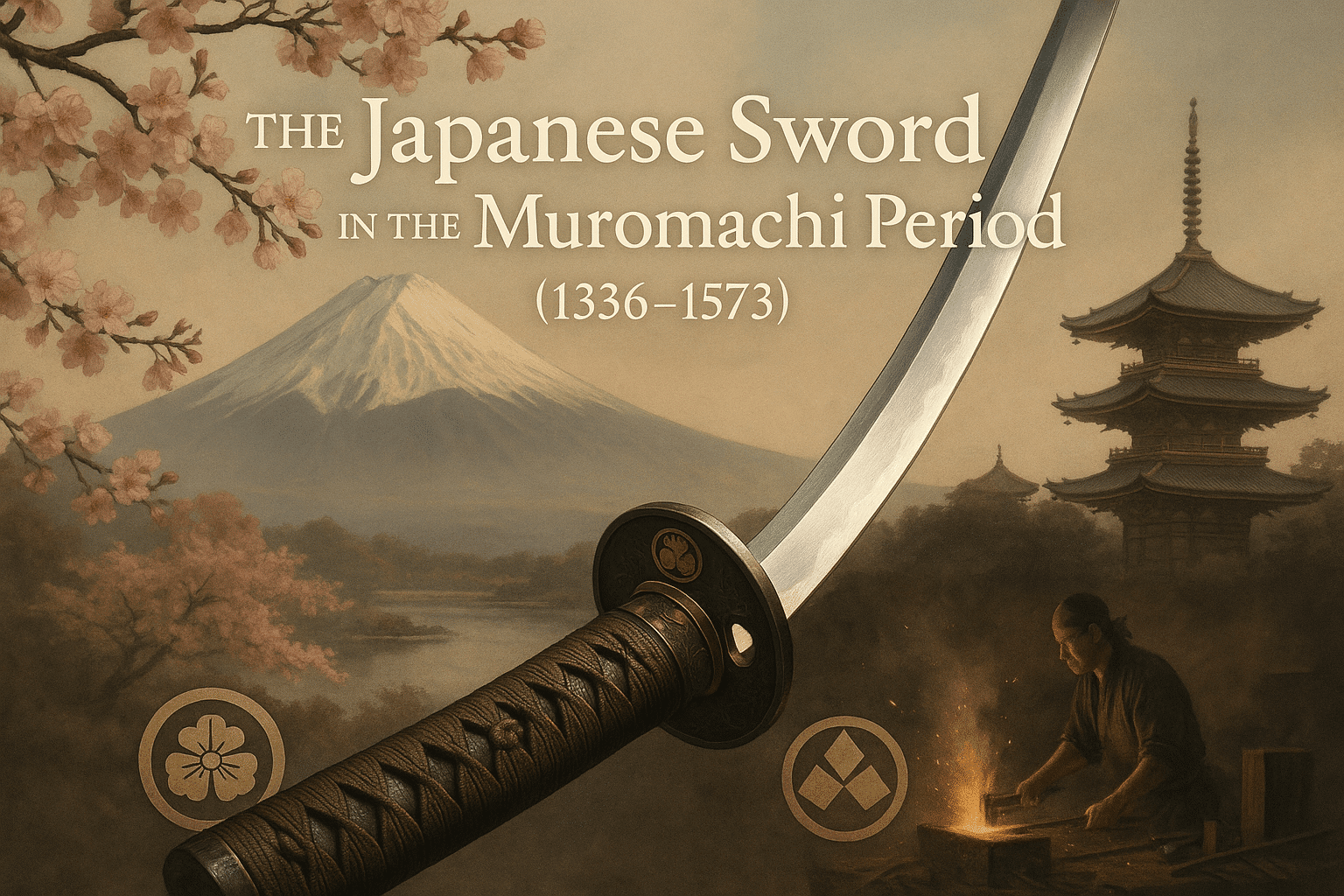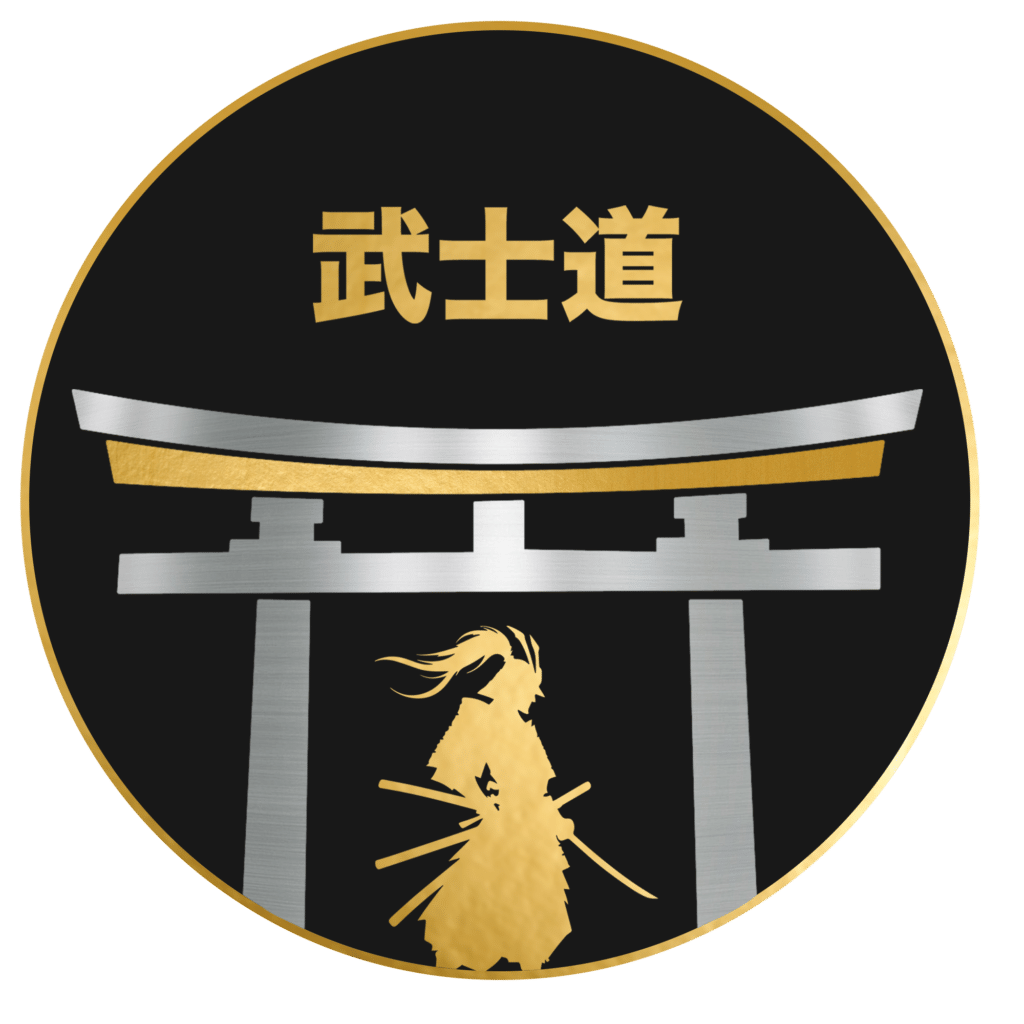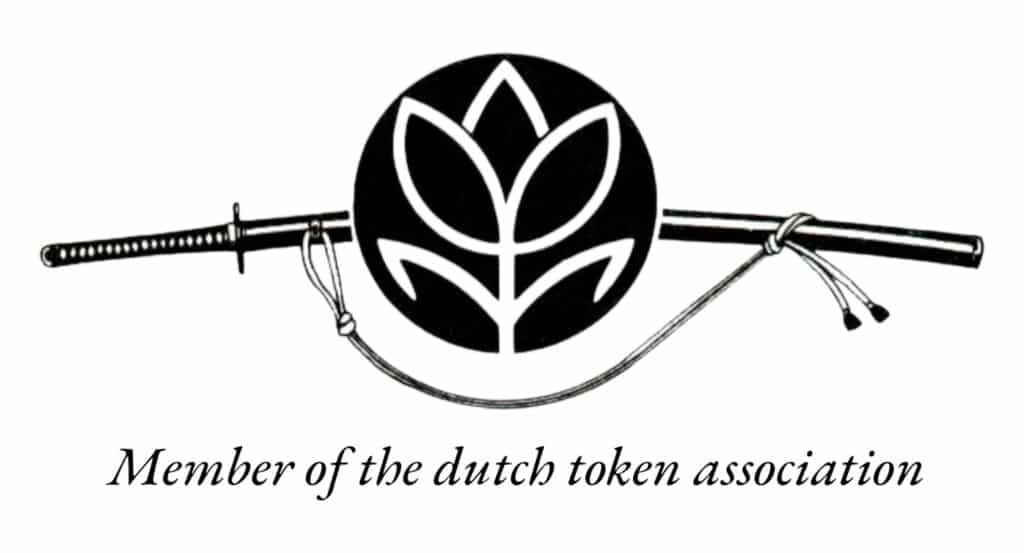Introduction to the Muromachi Period
The Muromachi Period (1336–1573) marks a pivotal era in Japanese history, defined by political upheaval, cultural flourishing, and the maturation of the samurai class. Named after the Muromachi district in Kyoto, where the Ashikaga shogunate held power, this period saw Japan transition from the dominance of the imperial court to the governance of warrior elites. While the Ashikaga shoguns ruled in name, actual power often rested with regional daimyō and military governors who commanded armies and competed for supremacy amid frequent conflicts.
This near-constant environment of warfare—especially during the Ōnin War (1467–1477) and the early Sengoku period—spurred innovation in military tactics and the evolution of weaponry. The Japanese sword, once primarily a symbol of feudal prestige, became a finely sharpened tool essential for survival and dominance on the battlefield. The necessity for practical, effective weapons led swordsmiths to adapt their methods, forging blades that balanced sharpness, strength, and usability.
At the same time, the samurai ethos began to crystallize around ideals of loyalty, discipline, and martial aptitude, cementing the sword’s significance as both a physical and spiritual emblem of the warrior. Cultural developments—in Noh theater, ink painting, and Zen Buddhism—further influenced the aesthetic values found in sword-making. Together, these social and artistic currents shaped the Muromachi Period, transforming the Japanese sword from a ceremonial object into a revered instrument of war and artistry.
Forged in War: The Role of the Sword
During the Muromachi period, Japan was fractured by relentless military strife. The Ashikaga shogunate’s tenuous grip on power made way for regional daimyōs, each striving for supremacy through constant conflict. The battlefield pressures of this era transformed the sword’s role—from a ceremonial emblem to a vital weapon for authority and survival.
The ever-shifting realities of war demanded swords that prioritized function and resilience. The tachi, once admired for its sweeping curve and use by mounted warriors, gradually ceded ground to the katana—a shorter, swifter sword worn edge-up at the waist. With warfare now centered on foot soldiers (ashigaru) and close-quarters combat, rapid drawing and maneuverability became paramount. Swordsmiths answered with new techniques, including mass-forging for greater production and innovations in metallurgy that refined tempering (yaki-ire), distinctive hamon patterns, and the folding process for optimal durability and edge retention.
Beyond its practical utility, the sword grew into an emblem of power and honor. Elaborate swords served as status symbols and gifts among daimyōs, reinforcing their prestige and martial standing. In this era of ambition and turbulence, the Japanese sword was forged as much by steel as by the era’s relentless competition and evolving ideals.
The Rise of the Katana
In the midst of the Muromachi period, Japanese swordsmanship underwent a defining transformation with the rise of the katana. This was not simply a matter of changing styles—it reflected a broader adaptation in warfare, armor, and the very identity of the samurai class.
Earlier, the tachi was favored for its long, elegantly curved blade worn edge-down, ideal for mounted fighting. But as conflicts increasingly shifted to urban, close-quarter environments, quick responsiveness on foot became crucial. The katana emerged to meet this demand: its slightly shorter, subtly curved blade was designed to be worn edge-up through the belt (obi), allowing lightning-fast drawing techniques such as iaijutsu. This innovation paralleled the shift in tactics to hand-to-hand combat, where speed and adaptability reigned.
Structurally, the katana was robust, featuring a stronger tang and refined metallurgy indicative of the era’s technical progress. By the late Muromachi period, the katana had become the samurai’s sword of choice—unifying practicality with the martial discipline and readiness essential to their evolving role.
Masters of the Forge
The Muromachi period ushered in remarkable advancements in sword-making, with legendary smiths and influential schools elevating the craft. The Bizen and Mino schools in particular became iconic, their methods setting enduring standards for Japanese blades.
Central Japan’s Mino school excelled in practical, resilient swords with deep curvature and the celebrated gunome-midare (wavy hamon pattern). Renowned smiths like Kanemoto and Kanesada produced blades prized for their durability and performance, transforming Seki in Mino Province into a preeminent center for sword production.
Meanwhile, the Bizen school perfected a lineage of balanced, elegant swords with gradual curves and intricate hamon—often the beautiful choji-midare (clove-shaped temper lines). Masters such as Masatsune and Norimitsu imbued their blades with both battlefield utility and cultural distinction, making Bizen swords coveted as symbols of refinement and rank.
These artisans not only advanced the technology of the sword but shaped the spirit of the era. Their legacy endures in the technical and artistic benchmarks they set, which continue to define Japanese sword-making even now.
Blade Geometry and Aesthetic
The Muromachi period transformed both the form and artistry of Japanese swords. Responding to shifting warfare—where speed, agility, and close combat became crucial—blades evolved to be shorter and more robust. The previously prominent curvature (sori) of tachi swords gave way to the straighter, more practical katana and uchigatana profiles, ideal for rapid drawing and efficient slashing.
Distinctive hamon patterns flourished during this period, with midare (irregular) temper lines gaining popularity. Elements like choji (clove) and gunome (undulating wave) not only personalized each blade but also symbolized a smith’s technical prowess. These visual signatures were both testaments to sophisticated differential hardening methods and reflections of the sword’s dual requirements: to be both resilient and razor-sharp.
Regional forging styles continued to develop: the Yamato school focused on precision, Bizen smiths emphasized harmony and durability, while Soshu influences—popularized by masters like Masamune—blended strength with visual refinement through innovative steel layering. Aesthetic considerations extended to polished surfaces, distinct grain patterns (hada), and meticulously inscribed signatures, elevating the Muromachi sword into an iconic intersection of functionality and art.
Sword as Status, Sword as Soul
In Muromachi Japan, the sword’s significance transcended its battlefield role. For the samurai, the katana was both a mark of social standing and a vessel of personal spirit. Much more than a weapon, a finely forged sword embodied honor, discipline, and the distinct code of bushidō that defined the warrior’s life.
Ownership of a quality blade signaled a samurai’s elite status—distinguishing both his martial prowess and his cultivated refinement. Every sword was meticulously crafted, a synergy of skill, ritual, and spiritual intent. It was widely believed that the process of making a sword could imbue it with kami, or spiritual essence, lending layers of meaning and legend to revered names like Muramasa and Kanemoto.
Swords were exchanged in solemn oaths of loyalty, treasured as heirlooms, and passed down generations as symbols of enduring honor. Whether worn at court or in battle, the sword reminded every samurai of his duty, heritage, and the deeply held conviction that the blade was not just an extension of his body, but of his very soul.
Legacy and Lasting Influence
The impact of Muromachi-period swordmaking resonates well beyond its own era, leaving a profound mark on Japanese arms, martial arts, and cultural consciousness. The relentless demands of war fostered technical breakthroughs—stronger blades, practical katana and uchigatana forms, and more efficient forging methods—that set the stage for later developments, especially the flourishing of the sword in the Edo period with its emphasis on symbolism and artistry.
Innovations in blade geometry, metallurgical refinement, and the proliferation of distinct regional styles diversified and enriched the traditions of sword-making. The technical mastery and balance between form and function achieved during this period became benchmarks for later generations of smiths and connoisseurs.
Today, Muromachi swords are admired by historians, collectors, and martial artists alike. They serve as models of balance and performance for practitioners of iaido and kendo, and as tangible artifacts through which to explore samurai culture and aesthetics. The esteem for Muromachi swords endures, a testament to their dual legacy as both functional masterpieces and cultural treasures.
Conclusion: Simplicity in Steel
The Muromachi period represents a defining, understated chapter in Japanese swordmaking—a time when necessity honed artistry into its purest form. In a landscape scarred by fragmentation and conflict, swordsmiths stripped away excess, producing blades that were lean, refined, and perfectly attuned to the realities of war. Yet within this purposeful simplicity lay profound elegance: balanced proportions, subtle curves, and nuanced craftsmanship that elevated the utilitarian into the sublime.
This transformation was not a decline, but an achievement—the quiet confidence of masters who found beauty in essential function. Muromachi swords, with their austere grace and technical precision, embody a philosophy where true sophistication is found not in ostentation but in masterful execution of the bare necessities.
When we trace the outline of a Muromachi blade, we see more than an instrument of war—we see distilled artistry, enduring restraint, and a timeless ideal: that the greatest elegance is found in what is both simple and superbly made.





